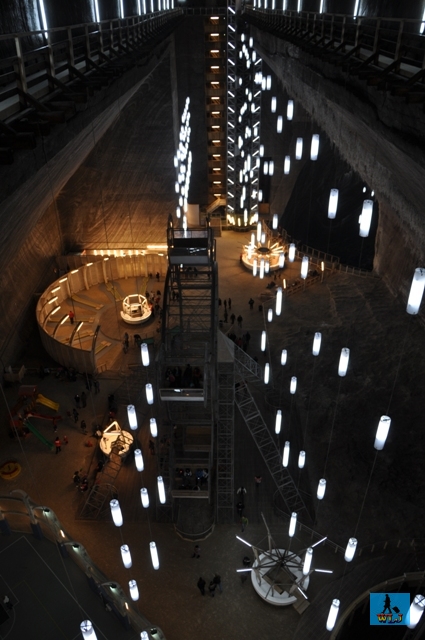Cluj County

Location:
Cluj County is situated in Transylvania region from Romania, in the central-west part of the country and its neighbors are the following counties: Bihor in west, Sălaj and Maramureş in north, Bistriţa-Năsăud and Mureş in east and Alba in south.
Area/Surface:
6.674 km²
Population:
659.000 people
Capital (Residence):
Cluj Napoca City 308.000 people
Religion:
Orthodox
Cars:
CJ
Calling code:
+4 0264 or 0364
Municipalities:
Cluj-Napoca, Câmpia Turzii, Dej, Gherla, Turda
Cities:
Huedin
Main roads:
A3 Gilău-Câmpia Turzii
E60(DN1) Oradea-Huedin-Cluj Napoca-Turda-Câmpia Turzii-Târgu Mureş
E576(DN1c) Cluj Napoca-Gherla-Dej
E58(DN1c) Baia Mare-Dej
E81(DN1f) Zalău-Cluj Napoca-Alba Iulia
DN1g Huedin-Jibou
DN16 Cluj Napoca-Sărmaş-Reghin

Cluj County
Relief, climate, rivers and lakes of Cluj County:
Cluj County has a diverse relief with the Apuseni Mountains (Vladeasa, Gilau, Muntele Mare (High Mount) and Trascau Mountains) covering the central-west and south parts of the county and the other part is covered by the Somesan Plateau and the Transylvania Plain (Transylvania Plateau). The maximum altitude is in Vladeasa peak of 1.836 m height. Cluj County‘s climate is temperate-continental of transition with some influences coming from the Atlantic Ocean. Despite the high elevation, summers might be warm and winters milder, due to the warm air coming from the west. The annual average of the temperature is 8-10° C and the rainfall is between 600 and 1.000 mm per year. The main rivers are Somesul Mic (Little), Aries and Crisul Repede (Fast) Rivers with their basins and tributaries and the largest and most important lakes are Dragan, Gilau, Tarnita and Fantanele Lakes as reservoir lakes.
Fauna, flora and tourist attractions and objectives:
Regarding the flora, as in many other areas of the country, the deciduous and conifer forests are mixed and the fauna is specific to the mountain and plateau areas. Unfortunately you can rarely see brown bears and wolves, but there are numerous species of animals like wild boars, foxes, harts, deer and many others. (Find more journeys on blog.worldlifetimejourneys.com) The most important tourist attractions from Cluj County are Cluj-Napoca City with its museums, botanical garden, historic center, Lady Mary’s Assumption Cathedral and the Saint Mihai (Michael) Church, Apuseni Mountains National Park, Bologa Citadel, Banffy Castle, Rachitele Waterfall, Draganului Valley, Nicula Monastery, Belis-Fântânele area, Turzii Keys Natural Reservation, Turda Salt Mine and many others. Visit Cluj County!
 The main hall of the new salt mine from Turda, Cluj County
The main hall of the new salt mine from Turda, Cluj County
![]() Caras Severin County
Caras Severin County
![]() Timis County
Timis County
![]() Arad County
Arad County
![]() Bihor County
Bihor County
![]() Salaj County
Salaj County
![]() Constanta County
Constanta County
![]() Tulcea County
Tulcea County
![]() Maramures County
Maramures County
![]() Satu Mare County
Satu Mare County
![]() Bacau County
Bacau County
![]() Botosani County
Botosani County
![]() Galati County
Galati County
![]() Iasi County
Iasi County
![]() Neamt County
Neamt County
![]() Vaslui County
Vaslui County
![]() Vrancea County
Vrancea County
![]() Arges County
Arges County
![]() Braila County
Braila County
![]() Buzau County
Buzau County
![]() Calarasi County
Calarasi County
![]() Dambovita County
Dambovita County
![]() Giurgiu County
Giurgiu County
![]() Ialomita County
Ialomita County
![]() Ilfov County
Ilfov County
![]() Prahova County
Prahova County
![]() Teleorman County
Teleorman County
![]() Dolj County
Dolj County
![]() Gorj County
Gorj County
![]() Mehedinti County
Mehedinti County
![]() Olt County
Olt County
![]() Valcea County
Valcea County
![]() Alba County
Alba County
![]() Bistrita Nasaud County
Bistrita Nasaud County
![]() Brasov County
Brasov County
![]() Cluj County
Cluj County
![]() Covasna County
Covasna County
![]() Harghita County
Harghita County
![]() Hunedoara County
Hunedoara County
![]() Mures County
Mures County
![]() Sibiu County
Sibiu County



